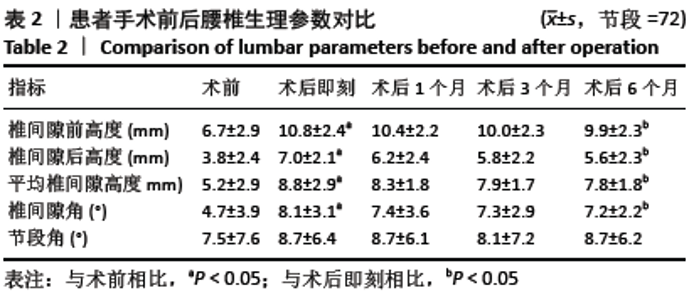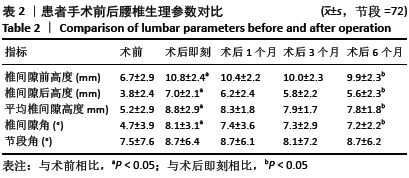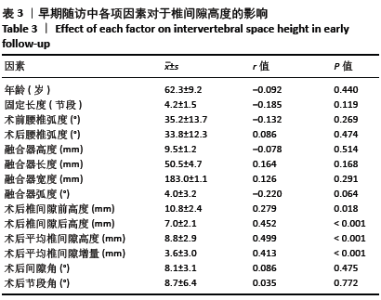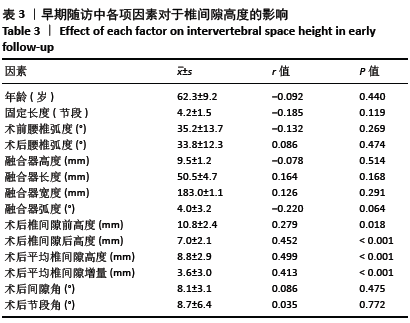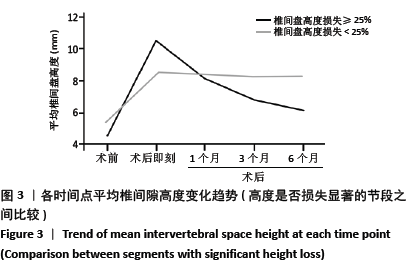[1] COLE CD, MCCALL TD, SCHMIDT MH, et al. Comparison of low back fusion techniques: Transforaminal lumbar interbody fusion (tLIF) or posterior lumbar interbody fusion (pLIF) approaches. Curr Rev Musculoskelet Med. 2009;2(2):118-126.
[2] SAKEB N, AHSAN K. Comparison of the early results of transforaminal lumbar interbody fusion and posterior lumbar interbody fusion in symptomatic lumbar instability. Indian J Orthop. 2013;47(3): 255-263.
[3] MARCHI L, ABDALA N, OLIVEIRA L, et al. Stand-alone lateral interbody fusion for the treatment of low-grade degenerative spondylolisthesis. Sci World J. 2012;2012:456346.
[4] PAWAR AY, HUGHES AP, SAMA AA, et al. A comparative study of lateral lumbar interbody fusion and posterior lumbar interbody fusion in degenerative lumbar spondylolisthesis. Asian Spine J. 2015;9(5): 668-674.
[5] 姜亮, 李文利, 翁张涛. OLIF联合后路固定手术治疗腰椎退行性病变疗效及功能恢复研究[J]. 海南医学,2019,30(24):3190-3193.
[6] CHENG I, BRISEÑO MR, ARRIGO RT, et al. Outcomes of two different techniques using the lateral approach for lumbar interbody arthrodesis. Global Spine J. 2015;5(4):308-314.
[7] NG JPH, KALIYA-PERUMAL AK, TANDON AA, et al. The oblique corridor at L4-L5: A radiographic-anatomical study into the feasibility for lateral interbody fusion. Spine (Phila Pa 1976). 2020;45(10):E552-E559.
[8] ARNOLD PM, ANDERSON KK, MCGUIRE JR RA. The lateral transpsoas approach to the lumbar and thoracic spine: A review. Surg Neurol Int. 2012;3(Suppl 3):S198.
[9] GRAGNANIELLO C, SEEX K. Anterior to psoas (aTP) fusion of the lumbar spine: Evolution of a technique facilitated by changes in equipment. J Spine Surg. 2016;2(4):256.
[10] YUAN W, KALIYA-PERUMAL AK, CHOU SM, et al. Does lumbar interbody cage size influence subsidence? A biomechanical study. Spine. 2020; 45(2):88-95.
[11] SALZMANN SN, SHUE J, HUGHES AP. Lateral lumbar interbody fusion-outcomes and complications. Curr Rev Musculoskelet Med. 2017;10(4): 539-546.
[12] BERJANO P, LANGELLA F, DAMILANO M, et al. Fusion rate following extreme lateral lumbar interbody fusion. Eur Spine J. 2015;24(3): 369-371.
[13] BLIZZARD DJ, GALLIZZI MA, SHEETS C, et al. Sagittal balance correction in lateral interbody fusion for degenerative scoliosis. Int J Spine Surg. 2016;10:29.
[14] KIM JS, LEE HS, SHIN DA, et al. Correction of coronal imbalance in degenerative lumbar spine disease following direct lateral interbody fusion (dLIF). Korean J Spine. 2012;9(3):176.
[15] ABBASI H, MILLER L, ABBASI A, et al. Minimally invasive scoliosis surgery with oblique lateral lumbar interbody fusion: Single surgeon feasibility study. Cureus. 2017;9(6):e1389.
[16] MALHAM GM, PARKER RM, GOSS B, et al. Indirect foraminal decompression is independent of metabolically active facet arthropathy in extreme lateral interbody fusion. Spine. 2014;39(22): E1303-E1310.
[17] FUKAYA K, HASEGAWA M. Oblique lumbar interbody fusion combined with minimally invasive percutaneous posterior instrumentation for adult spinal deformity. No Shinkei Geka. 2018;46(9):771-781.
[18] MACKI M, ANAND SK, SURAPANENI A, et al. Subsidence rates after lateral lumbar interbody fusion: A systematic review. World Neurosurg. 2019;122:599-606.
[19] 黄培培. 腰椎单节段融合术中椎间高度、椎间高度指数对临床疗效及邻近节段退变影响的研究[D]. 西安:第四军医大学,2016.
[20] JIN J, RYU KS, HUR JW, et al. Comparative study of the difference of perioperative complication and radiologic results. Clin Spine Surg. 2018;31(1):31-36.
[21] 葛鑫, 徐宏光, 刘晨, 等. 腰椎退行性病单独腰椎斜外侧椎体间融合术的并发症[J]. 中国矫形外科杂志,2020,28(3):193-198.
[22] DRAZIN D, KIM TT, JOHNSON JP. Simultaneous lateral interbody fusion and posterior percutaneous instrumentation: Early experience and technical considerations.Biomed Res Int . 2015;2015:458284.
[23] LIU X, MA J, PARK P, et al. Biomechanical comparison of multilevel lateral interbody fusion with and without supplementary instrumentation: A three-dimensional finite element study. BMC Musculoskelet Disord. 2017;18(1):63.
[24] MOBBS RJ, PHAN K, MALHAM G, et al. Lumbar interbody fusion: Techniques, indications and comparison of interbody fusion options including pLIF, tLIF, mI-tLIF, oLIF/ATP, lLIF and aLIF. J Spine Surg. 2015; 1(1):2.
[25] TEMPEL ZJ, MCDOWELL MM, PANCZYKOWSKI DM, et al. Graft subsidence as a predictor of revision surgery following stand-alone lateral lumbar interbody fusion. J Neurosurg Spine. 2018;28(1):50-56.
[26] YOSHIHARA H. Indirect decompression in spinal surgery. J Clin Neurosci. 2017;44:63-68.
[27] MARCHI L, ABDALA N, OLIVEIRA L, et al. Radiographic and clinical evaluation of cage subsidence after stand-alone lateral interbody fusion. J Neurosurg Spine. 2013;19(1):110-118.
[28] NEMANI VM, AICHMAIR A, TAHER F, et al. Rate of revision surgery after stand-alone lateral lumbar interbody fusion for lumbar spinal stenosis. Spine. 2014;39(5):E326-E331.
[29] MCCOY S, TUNDO F, CHIDAMBARAM S, et al. Clinical considerations for spinal surgery in the osteoporotic patient: A comprehensive review. Clin Neurol Neurosurg. 2019;180:40-47. |


